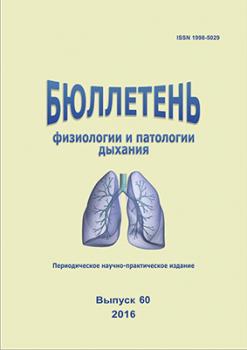The aim of the research is to study the availability of vitamin D among children of different age and pregnant women living in the Amur region. 339 residents of Blagoveshchensk (279 children of different age and 60 adults) were examined. Among them there were 129 toddlers, 90 children of preschool age of 3-6 years old, 60 adolescents of 15-17 years old and 60 adults (pregnant women) of 18-40 years old. In the blood serum the content of the metabolite of vitamin D [25(OH)D] was studied by high performance liquid chromatography. The assessment of risk factors for failure and deficiency of vitamin D was conducted by clinical and anamnestic data. The first results of the study have been presented. They indicate a high frequency of various vitamin D deficiency in the population of the Amur region. Among 339 residents of the Amur region 92 (27.1%) had an adequate availability of vitamin D, 144 (42.4%) had an insufficiency of 25(OH)D; at the same time vitamin D deficiency was identified in 90 (26.5%) with 1/3 of the child population and 1/4 of pregnant women. The level of 25(OH)D within normal limits found in 37.5% of children in the first year of life decreased till 3.6 % by 3 years old, with its deficit increasing from 29.1% to 50%, persisting at this level (45.5 percent) in 3-6 year-old children, declining till 23.3% in adolescents and till 23.3% in pregnant women. The average vitamin D in the studied age periods was the highest in the first year of life (36.14±4.3 ng/ml), and the lowest in 2-3 year-old children (19.31±14.68 ng/ml), with a gradual increase in 3-6 years old (21.77±0.96 ng/ml); in 15-17 years old (23.89±0.66 ng/ml) and in pregnant women it has reached a level of 27.75±0.18 ng/ml, remaining below normal values. Respiratory infections, digestion, bone and joint systems pathologies are the most important risk factors contributing to the low status of 25 (OH) D; their prevention, alongside with the correction of vitamin D deficiency can improve the health of the population of the Amur region.
vitamin D, vitamin D insufficiency, vitamin D deficiency, risk factors
1. Borisenko E.P., Romantsova E.B., Babtseva A.F. The features of D-deficit state in children living in the Amur region. In: Important problems of the health of children and teenagers: collection of scientific articles. Khabarovsk: Far Eastern State Medical University; 2015: 21-27 (in Russian).
2. Vitebskaya A.V., Smirnova E.G., Ilʹyin A.V. Vitamin D and indices of calcium-phosphoric metabolism in children living in Central Russia, in the period of maximum insolation. Osteoporoz i osteopatii 2010; 2:4−9 (in Russian).
3. Gromova O. A., Torshin I.Yu. Vitamin D − change of paradigm. Moscow: Tarus Press; 2015 (in Russian).
4. Evseeva G.P., Tsekh O.Yu., Tokarev N.S., Uchakina R.V., Efimenko M.V., Vyushkov K.K., Belova N.V., Tselykh E.D., Suprun S.V., Kozlov V.K. Vitamin D supply of Amur region children and teenagers. Zdorov´e sem´i − 21 vek 2014; 4(3):23−35 (in Russian).
5. Zakharova I.N., Korovina N.A., Dmitriev Yu.A. The role of vitamin D metabolites in rickets at children. Pediatriya 2010; 89(3):68−73 (in Russian).
6. Zakharova I.N., Mal’tsev S.V., Borovik Т.E., Yatsyk G.V., Malyavskaya S.I., Vakhlova I.V., Shumatova Т.А., Romantsova Ye.B., Romanyuk F.P., Klimov L.Ya., Pirozhkova N.I., Kolesnikova S.М., Kur’yaninova V.А., Tvorogova Т.М., Vasil’yeva S.V., Mozzhukhina М.V., Yevseeva Ye.А. Vitamin D Insufficiency in Children of Tender Years in Russia: the Results of a Multi-Centre Cohort Study RODNICHOK (2013-2014). Voprosy sovremennoi pediatrii 2014; 13(6):30-34 (in Russian).
7. Zakharova I.N., Maltsev S.V., Borovik T.E., Yatsyk G.V., Malyavskaya S.I., Vahlova I.V., Shumatova T.A., Romantsova E.B., Romaniuk F.P., Klimov L.Y., Pyrozhkova N.I., Kolesnikova S.M., Kuryaninova V.A., Vasilieva S.V., Mozzhukhina M.V., Evseeva E.A. Results of a multicenter research «Rodnichok» for the study of vitamin D insufficiency in infants in Russia. Pediatriya 2015; 94(1):62-67 (in Russian).
8. Novikov P.V. Modern rickets (classification, diagnosis, treatment and prevention): lecture for doctors. Moscow; 2007 (in Russian).
9. Smirnova G.E., Vitebskaya A.V., Shmakov N.A. The role of vitamin D in the development of the child´s body and correction of its deficit. Сonsilium medicum. Pediatriya. 2010; 3:7−12 (in Russian).
10. Béghin L., Huybrechts I., Vicente-Rodríguez G., De Henauw S., Gottrand F., Gonzales-Gross M., Dallongeville J., Sjöström M., Leclercq C., Dietrich S., Castillo M., Plada M., Molnar D., Kersting M., Gilbert C.C., Moreno L.A. Main characteristics and participation rate of European adolescents included in the HELENA study. Arch. Public Health 2012; 70(1):14. doihttps://doi.org/10.1186/0778-7367-70-14.
11. Hayes C.E., Nashold F.E., Spach K.M., Pedersen L.B. The immunological functions of the vitamin D endocrine system. Cell. Mol. Biol. (Noisy-le-grand) 2003; 49(2):277−300.
12. Heaney R.P. Assessing vitamin D status. Curr. Opin. Clin. Nutr. Metab. Care 2011; 14(5):440−444.
13. Holick M.F. Vitamin D deficiency. N. Engl. J. Med. 2007; 357(3):266−281.
14. Lee J.M., Smith J.R., Philipp B.L., Chen T.C., Mathieu J., Holick M.F. Vitamin D deficiency in a healthy group of mother and newborn infants. Clin. Pediatr. (Phila) 2007; 46(1):42−44.





